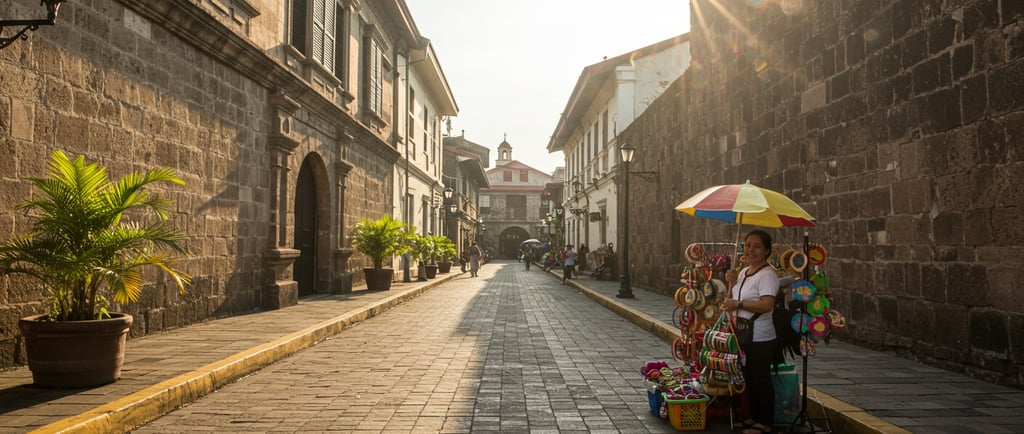Modern Filipino Etiquette: What You Should (and Shouldn’t) Do
Blog post description.
6/25/20253 min read


Meta Title: Modern Filipino Etiquette: A Guide for Tourists and Expats in the Philippines
Meta Description: Visiting or living in the Philippines? Learn the do’s and don’ts of Filipino etiquette — from saying “po” to removing shoes indoors and respecting personal space.
🇵🇭 Introduction
Whether you're a tourist staying a few days or an expat settling in for the long haul, understanding Filipino etiquette goes a long way in building meaningful connections and avoiding social faux pas. The Philippines is warm, welcoming, and full of unspoken customs that blend traditional values with modern hospitality.
Here's your friendly guide to modern Filipino etiquette — what to do, what to avoid, and how to show respect the Filipino way.
1. Use “Po” and “Opo” for Respect
✅ Why it matters:
These honorifics are used to show respect to elders and authority figures. It’s a simple way to be polite and well-received.
🙌 How to respond politely:
Add “po” when speaking — like “Salamat po” (Thank you) or “Opo” (Yes, ma’am/sir).
2. Remove Your Shoes When Entering a Home
✅ Why it matters:
It’s a sign of cleanliness and respect for the host’s space. Many Filipino homes have this unspoken rule.
🙌 How to respond politely:
Look for shoes at the door. If in doubt, just ask, “Should I take my shoes off?”
3. Accept Food or Drinks When Offered
✅ Why it matters:
Offering food is how Filipinos show love and hospitality. Refusing can unintentionally hurt your host’s feelings.
🙌 How to respond politely:
Say “Sige po, kaunti lang” (Okay, just a little) even if you’re full. Complimenting the food goes a long way: “Ang sarap po!”
4. Give and Receive With Your Right Hand (or Both Hands)
✅ Why it matters:
Using the right hand (or both hands) when giving something is a sign of courtesy and respect, especially with elders or in formal settings.
🙌 How to respond politely:
Use your right hand when handing over money, gifts, or documents — or use both hands for extra care.
5. Greet People With a Smile (Even Strangers!)
✅ Why it matters:
Smiling is part of everyday warmth in the Philippines. It creates instant friendliness, especially in provinces.
🙌 How to respond politely:
Smile back or give a simple “Hi po” or nod, even to strangers or staff.
6. Respect Personal Space — But Expect Less of It
✅ Why it matters:
Filipinos are generally courteous, but in crowded places (like jeepneys or markets), personal space naturally shrinks.
🙌 How to respond politely:
Stay calm and patient in tight spaces. Avoid pushing or reacting loudly.
7. Be Discreet With Criticism or Complaints
✅ Why it matters:
Public confrontation can cause “hiya” (shame), which many Filipinos are sensitive to.
🙌 How to respond politely:
Bring up issues privately and kindly. A calm tone makes all the difference.
8. Don’t Point With Your Finger
✅ Why it matters:
Pointing directly at people can come across as rude or aggressive.
🙌 How to respond politely:
Use your whole hand or gesture with your chin or lips — yes, it’s a thing!
9. Learn Basic Local Words and Phrases
✅ Why it matters:
Filipinos appreciate when foreigners make the effort to learn even a few Tagalog or regional words.
🙌 How to respond politely:
Start with “Salamat” (Thank you), “Magandang araw” (Good day), or “Ingat” (Take care).
10. Say Hello and Goodbye When Entering or Leaving
✅ Why it matters:
Acknowledging people when entering or leaving a room, house, or gathering is a basic courtesy.
🙌 How to respond politely:
Greet with a “Hi po” or “Goodbye po” and wave. It’s always noticed and appreciated.
✨ Bonus Tip: When in Doubt, Be Friendly and Observant
Filipinos are incredibly forgiving of cultural missteps, especially if you’re kind, respectful, and willing to learn. If you’re unsure of what to do, simply observe how locals behave — or ask politely.
